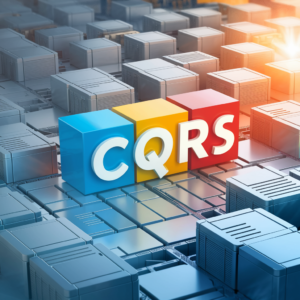Introduction: In the world of Java programming, input and output (I/O) operations are fundamental for interacting with files, streams, and other external data sources. Java provides powerful libraries for performing I/O operations efficiently and effectively. In this article, we’ll explore Java I/O and Serialization, focusing on how to work with files, streams, and serialization in Java applications.
Understanding Java I/O: Java I/O (Input/Output) is the mechanism by which Java programs read from and write to external sources, such as files, network sockets, and system input/output streams. Java provides several classes and interfaces in the java.io package to facilitate I/O operations.
- Working with Files:
Java offers classes such as File, FileInputStream, FileOutputStream, FileReader, and FileWriter for working with files. These classes allow you to perform operations such as reading from and writing to files, creating directories, listing file contents, and checking file properties.
import java.io.File;
import java.io.FileWriter;
import java.io.FileReader;
import java.io.IOException;
public class FileExample {
public static void main(String[] args) {
try {
// Create a new file
File file = new File("example.txt");
// Write data to the file
FileWriter writer = new FileWriter(file);
writer.write("Hello, World!");
writer.close();
// Read data from the file
FileReader reader = new FileReader(file);
int data = reader.read();
while (data != -1) {
System.out.print((char) data);
data = reader.read();
}
reader.close();
} catch (IOException e) {
e.printStackTrace();
}
}
}
2. Working with Streams:
Java streams are a sequence of data elements that can be read from or written to. Java provides InputStream, OutputStream, Reader, and Writer classes for working with byte-oriented and character-oriented streams. These classes support a wide range of operations, including reading/writing primitive data types, buffering, and handling exceptions.
import java.io.FileInputStream;
import java.io.FileOutputStream;
import java.io.IOException;
public class StreamExample {
public static void main(String[] args) {
try {
// Write data to a file using FileOutputStream
FileOutputStream outputStream = new FileOutputStream("data.txt");
outputStream.write("Hello, World!".getBytes());
outputStream.close();
// Read data from a file using FileInputStream
FileInputStream inputStream = new FileInputStream("data.txt");
int data = inputStream.read();
while (data ! = -1) {
System.out.print((char) data);
data = inputStream.read();
}
inputStream.close();
} catch (IOException e) {
e.printStackTrace();
}
}
}
3. Serialization in Java:
Serialization is the process of converting an object into a stream of bytes to store it in memory, send it over a network, or persist it to a file. Java provides built-in support for serialization through the java.io.Serializable interface. Serializable classes can be written to ObjectOutputStreams and read from ObjectInputStreams.
import java.io.*;
class Person implements Serializable {
private String name;
private int age;
public Person(String name, int age) {
this.name = name;
this.age = age;
}
public String toString() {
return "Name: " + name + ", Age: " + age;
}
}
public class SerializationExample {
public static void main(String[] args) {
try {
// Serialize object to a file
ObjectOutputStream outputStream = new ObjectOutputStream(new FileOutputStream("person.ser"));
Person person = new Person("John", 30);
outputStream.writeObject(person);
outputStream.close();
// Deserialize object from a file
ObjectInputStream inputStream = new ObjectInputStream(new FileInputStream("person.ser"));
Person deserializedPerson = (Person) inputStream.readObject();
System.out.println("Deserialized Person: " + deserializedPerson);
inputStream.close();
} catch (IOException | ClassNotFoundException e) {
e.printStackTrace();
}
}
}
Conclusion:
Java I/O and Serialization are powerful features that enable developers to read from and write to external sources and serialize objects for storage or transmission. By understanding how to work with files, streams, and serialization in Java, developers can build robust and efficient applications that interact seamlessly with external data sources. Whether reading/writing files, processing streams, or serializing objects, Java provides comprehensive APIs for performing a wide range of I/O operations.





